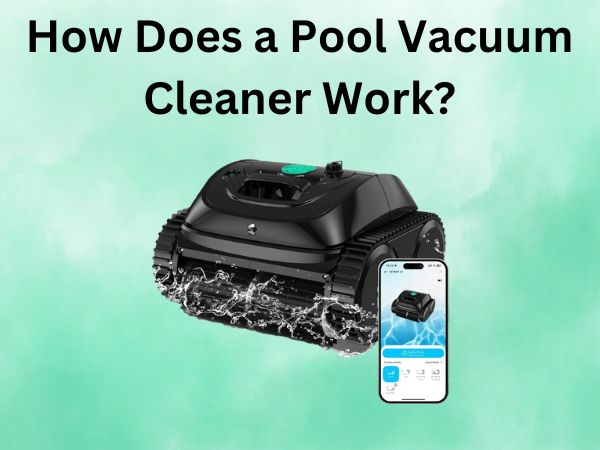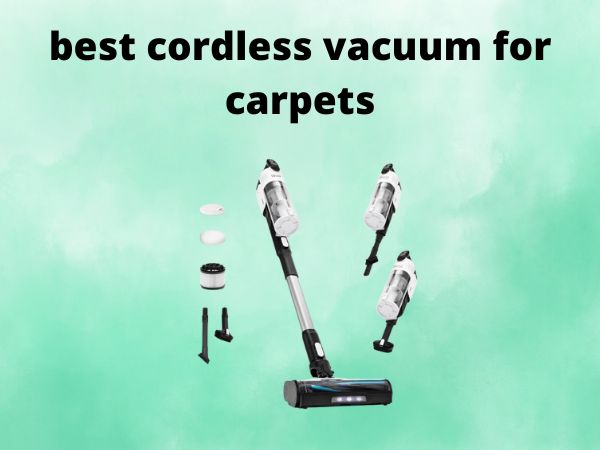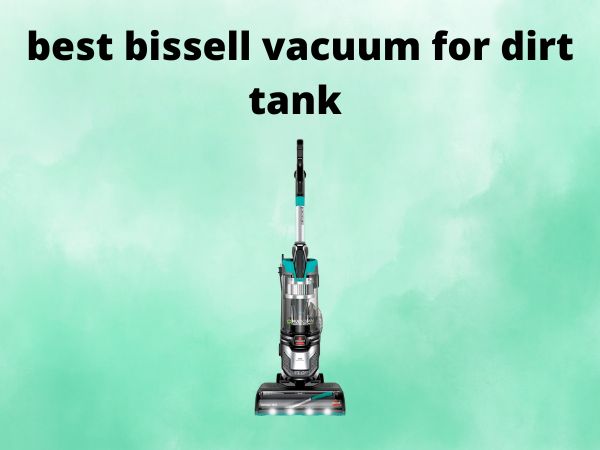How Does a Pool Vacuum Cleaner Work? [Complete Guide]
Have you ever gazed into a pristine swimming pool and wondered what magic keeps it so clean? Well, let’s dive into the fascinating world of pool vacuum cleaners. These nifty gadgets are your pool’s best friend, ensuring it remains sparkling clean without you having to break a sweat. But how do they actually work? Let’s get into the nitty-gritty details!
Table of Contents
Understanding the Basics of Pool Vacuum Cleaners
Before we get into the mechanics, it’s important to grasp the fundamental concept of how a pool vacuum cleaner operates. Picture your pool as a bed of fine silk, delicate and immaculate. Now, imagine the dust and debris as stubborn stains that cling to the fabric. Your pool vacuum is the magic wand that wipes away these blemishes effortlessly.
The Role of Suction
The key mechanism behind most pool vacuum cleaners is suction. Think of it like a mosquito that never misses the taste of a fresh picnic. The vacuum creates a powerful pull that draws in dirt and debris from the water’s surface and floor.
Pumping Mechanism
How does it get its power? Here comes the pump. The pool’s filtration system is the heart that pumps water, and the vacuum is simply an extension of this circulatory system. The vacuum cleaner hooks onto your pool’s skimmer or a dedicated suction port, siphoning off the water and debris.
Different Types of Pool Vacuum Cleaners
Like superheroes donning different costumes, pool vacuums come in various forms, each with its own unique powers and abilities.
Manual Pool Vacuum Cleaners
Picture manual vacuums as janitors of the pool world. They require a bit of elbow grease and human intervention to operate but don’t underestimate their capability. They are efficient, reliable, and cost-effective.
Automatic Pool Vacuum Cleaners
Automatic vacuums are the autonomous cars of the pool cleaning world. Set them loose, and they’ll do the work for you. They come in two main flavors: suction-side and pressure-side vacuums.
Suction-Side Pool Vacuums
Suction-side vacuums attach to your pool’s existing filtration system. They wander around like a Roomba, munching on dirt and sucking up unwanted guests at the pool party.
Pressure-Side Pool Vacuums
These vacuums rely on water pressure from a dedicated booster pump. They have their own filtering bag, ensuring that the pool’s filter isn’t overwhelmed with debris. It’s like having a mini filter system piggybacking on the main one.
Robotic Pool Cleaners
Robotic cleaners are cutting-edge – think of them as the iPhones of pool maintenance. They come with their own intelligent systems and don’t require a connection to your pool’s filtration system. They’re independent, energy-efficient, and as high-tech as a gadget in a James Bond movie.
How Does Each Type Work?
Now, let’s break down the inner workings of each type like opening a clock to watch the gears tick.
Manual Vacuum Operations
Using a manual vacuum is like painting a canvas—line by line. You attach a hose and a telescopic pole to a vacuum head. As you guide it along the pool’s surfaces, the vacuum head sucks up dirt, which travels through the hose and into the pool’s filter system.
Automated Suction-Side Cleaner
Suction-side cleaners work as if they’re playing a spirited game of tag. They attach to the pool’s skimmer or a dedicated port and are powered by the regular filtration pump. The suction draws water and debris into the filtration system, leaving the pool immaculate.
Pressure-Side Cleaner’s Functionality
Imagine a pressure-side cleaner as an underwater vacuuming octopus. It relies on the pool pump or additional booster pump, propelling itself around the pool. Its onboard filter bag captures debris, ensuring your pool’s filter system isn’t overloaded.
How Robotic Cleaners Operate
Robotic cleaners are akin to autonomous robots navigating uncharted lands. They’re equipped with motors and sensors, independently cleaning without being tied to the filtration system. They scrub, vacuum, and remove debris as they roam about, making your pool sparkle.
The Benefits of Using a Pool Vacuum Cleaner
Why bother with a vacuum cleaner? Well, keeping your pool clean is akin to keeping your body’s system healthy—it’s not just about looks; it’s about functionality and enjoyment.
- Maintains Hygiene: Protects against potential pathogens.
- Improves Aesthetic: Keeps your pool visually stunning.
- Saves Time: Cuts down on manual cleaning hours.
- Prolongs Equipment Life: Reduces strain on filtration systems.
Conclusion
In the end, a pool vacuum cleaner is more than just a cleaning tool—it’s a vital cog in the machine that keeps your swimming pool welcoming and inviting. Whether it’s a manual, automatic, or robotic system, each type brings its own flair to pool maintenance. The next time you watch your pool glisten under the sun, you’ll appreciate the unseen handiwork of that trusty pool vacuum cleaner humming along in the background.
FAQs
How often should I vacuum my pool?
It depends on the usage and surrounding environment, but generally, once a week is recommended to keep it looking pristine.
Can I leave my pool vacuum cleaner in the pool?
While some automatic and robotic vacuums can stay in the pool, it’s best to take them out when not in use to prolong their lifespan.
Do robotic pool cleaners work in all types of pools?
Yes, they are versatile and work in most types of pools, including concrete, vinyl, and fiberglass.
Are robotic pool cleaners energy efficient?
Absolutely! They typically consume less energy compared to traditional pool cleaning methods, often comparable to powering a small lamp.
What’s the difference between pool vacuum hoses and cleaner hoses?
Pool vacuum hoses are used with manual vacuums, while cleaner hoses are used in automated systems for specific purposes.



![5 Best Cordless Vacuum Cleaners for Pet Hair [In 2026]](https://bathroomexplorer.com/wp-content/uploads/2025/06/best-cordless-shark-vacuum-for-pet-hair-1.jpg)
